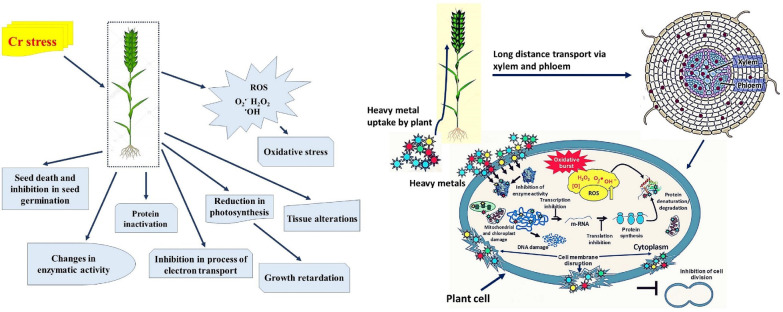Figure 2.
Schematic representation from the sequestration of chromium (Cr) into a plant cell to the plant’s death, through a series of events. Cr toxicity decelerates photosynthesis by preventing seedling establishment and root growth, which in turn slows down essential nutrient and water uptake. Moreover, toxicity of Cr alters photosynthetic pigments content in plant leaves, and these alterations typically result in chlorosis and necrosis of the leaves. In addition, to decreasing membrane integrity, high Cr stress also causes the loss of osmolytes and cell turgor pressure, which causes stomatal closure impacting overall osmoregulation. Additionally, Cr toxicity disrupts the equilibrium between the generation of reactive oxygen species (ROS) and the antioxidant defense system, which causes ROS to build up and cause oxidative damage to cellular organelles. DNA damage, protein and lipid synthesis, lipid peroxidation, enzyme activity, and impaired cell division are all affected by the formation of ROS, which ultimately leads to plants death (Shanker et al., 2005; Rizvi et al., 2020).

